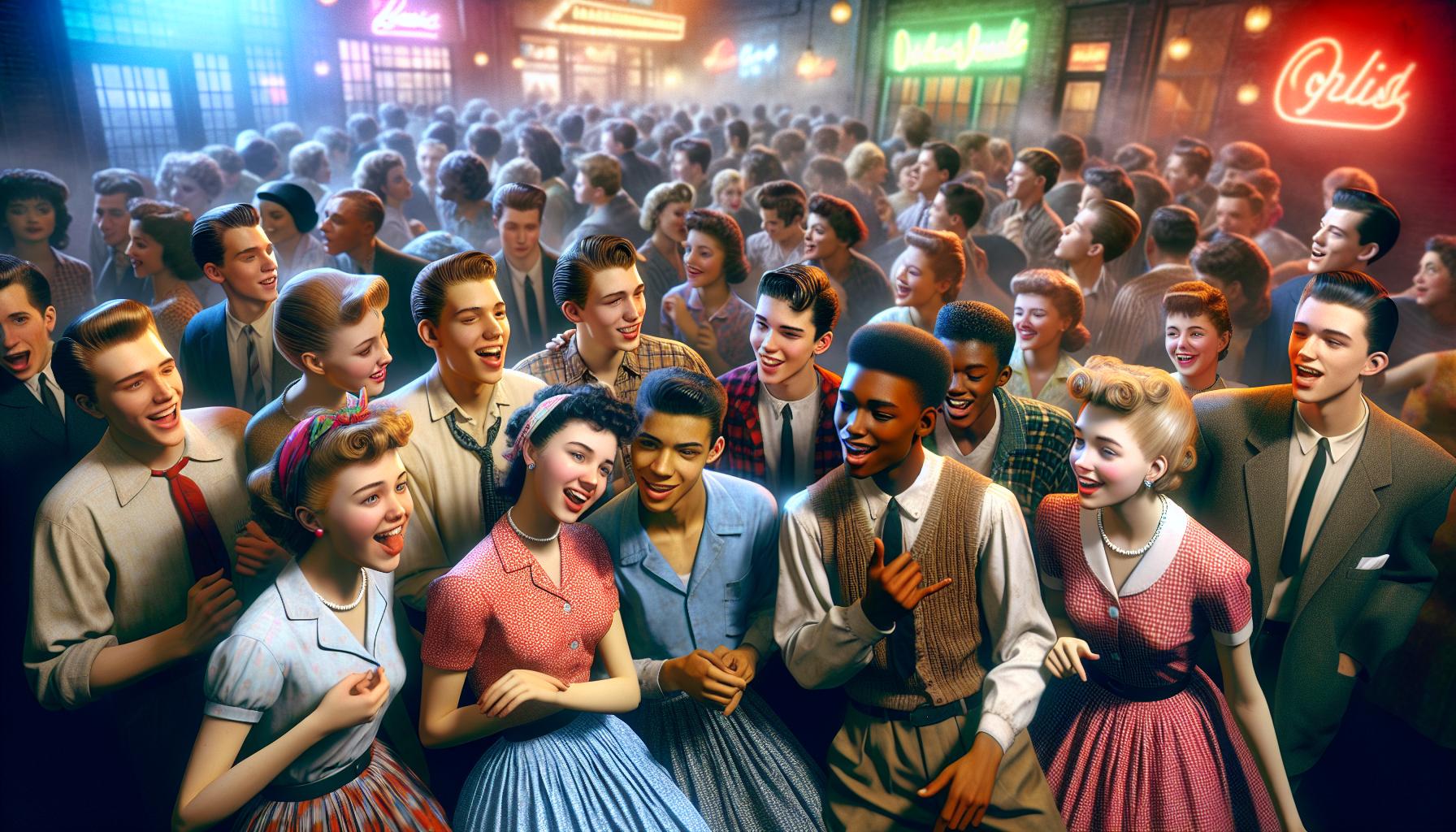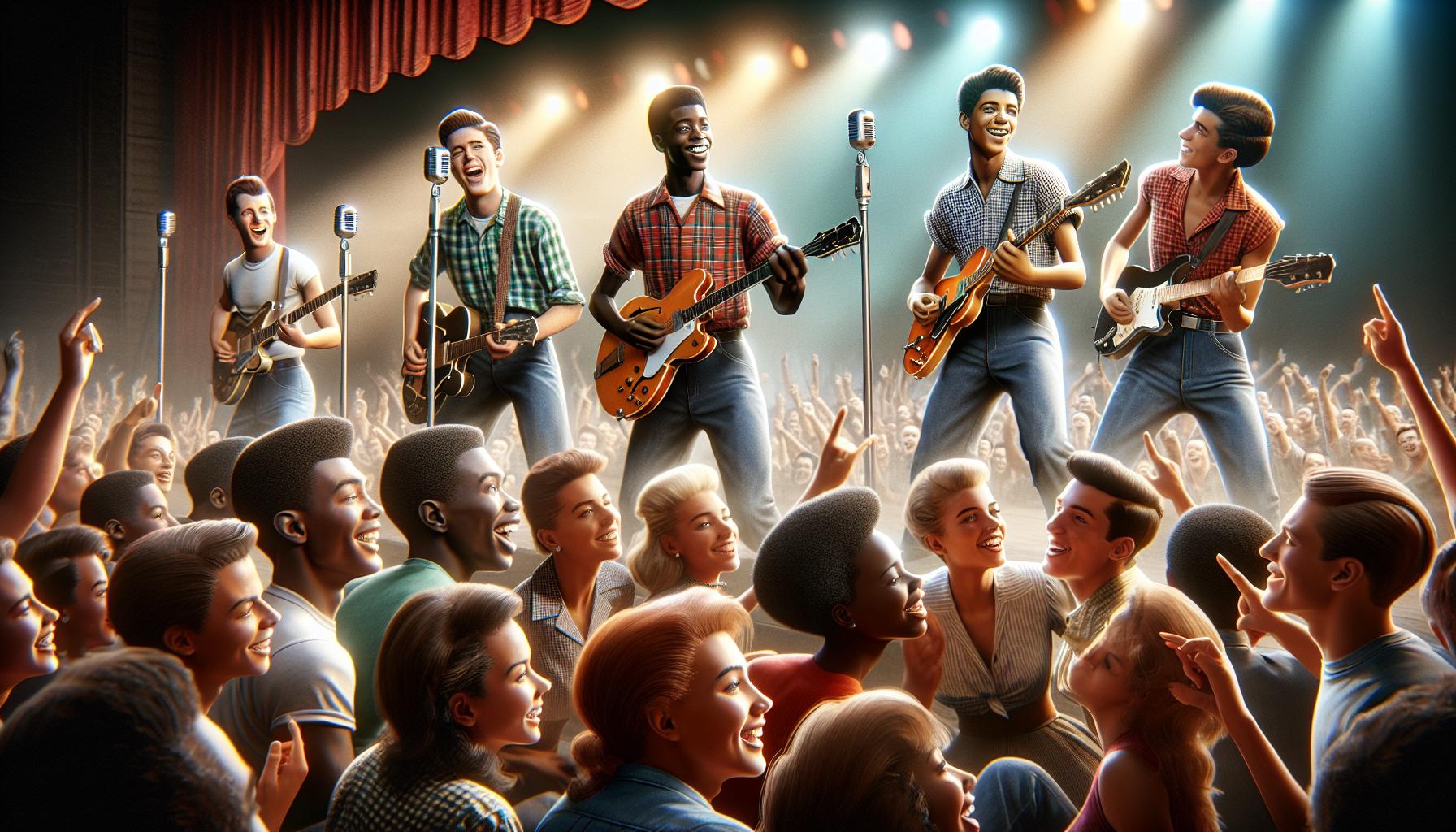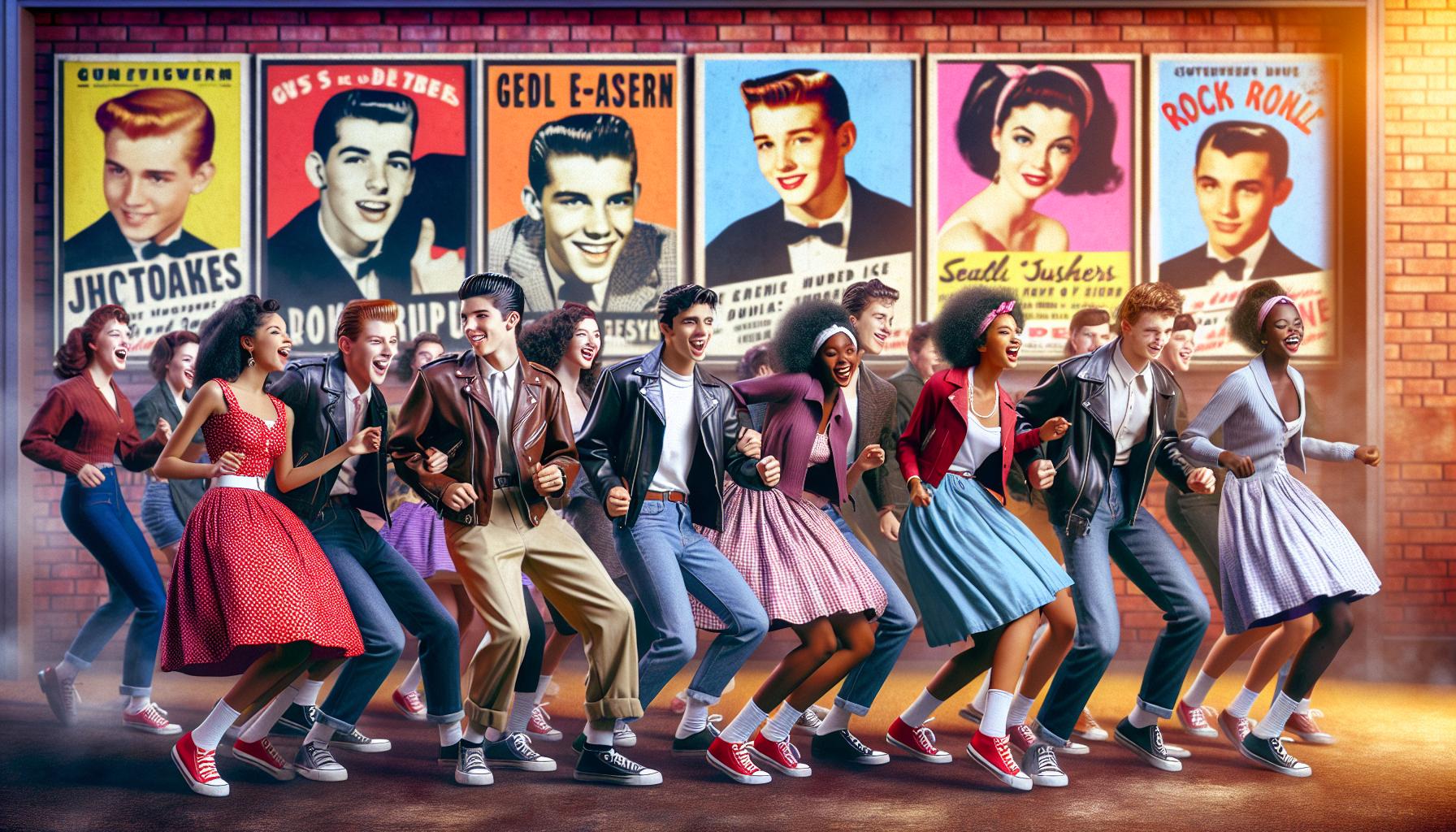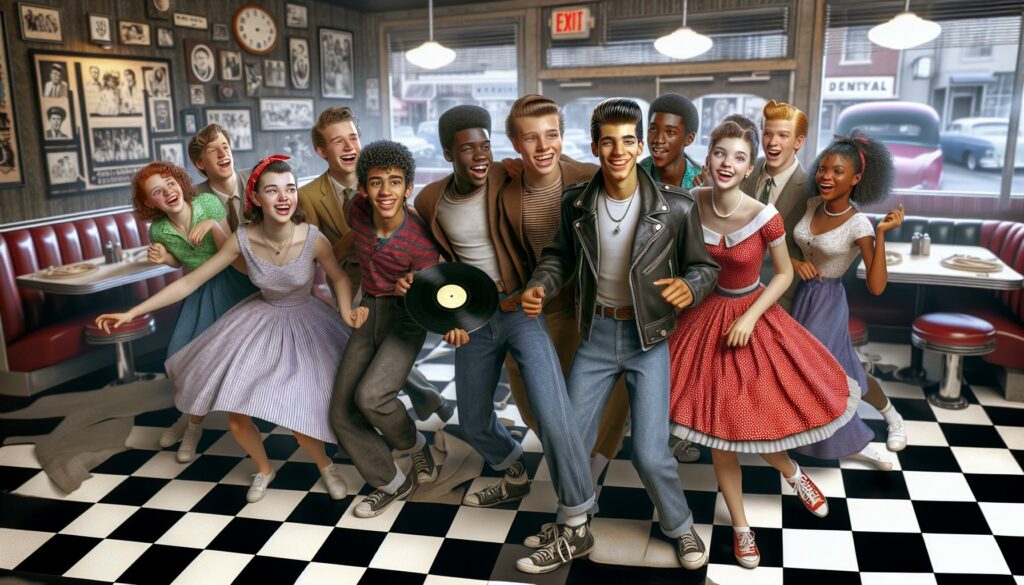Rock and roll music burst onto the scene in the 1950s, shaking up the cultural landscape of the United States. It wasn’t just a new sound; it was a revolutionary force that changed how people connected, expressed themselves, and viewed societal norms. As I dive into this topic, I can’t help but reflect on how this genre not only captivated the youth but also challenged the status quo.
One significant effect of rock and roll was its role in bridging racial divides. With its roots in African American musical traditions, rock and roll brought together diverse audiences, fostering a sense of unity amidst a backdrop of segregation. This musical movement sparked conversations about race, identity, and freedom, leaving an indelible mark on American society that still resonates today.
Key Takeaways
- Cultural Transformation: Rock and roll emerged in the 1950s as a revolutionary force, reshaping cultural identities and social dynamics in the U.S.
- Bridging Racial Divide: The genre united diverse audiences by drawing from African American musical traditions, fostering discussions on race and promoting integration.
- Youth Empowerment: Rock and roll became the anthem for a rebellious youth culture, encouraging self-expression and the pursuit of personal identity beyond traditional norms.
- Economic Impact: The rock and roll movement significantly influenced the music industry, leading to increased record sales and the rise of teen consumerism, shaping marketing strategies across various sectors.
- Legacy of Inclusivity: The genre’s inclusive environment helped pave the way for future collaborations among artists of different backgrounds, influencing social change that resonated in subsequent decades.
- Enduring Influence: The impact of rock and roll during the 1950s continues to be felt today, as it laid the groundwork for future music genres and cultural movements.
What Was One Effect of Rock And Roll Music on U.s. Society During The 1950s?
Rock and roll emerged in the 1950s as a transformative force in American music and culture. It captivated the youth, reshaping their identities and challenging conventional norms.
Definition and Origins
Rock and roll signifies a genre that blends elements of rhythm and blues, country, and gospel music. It emerged primarily from the African American musical traditions of the 1940s, gaining mainstream attention through artists who combined upbeat rhythms with catchy melodies. The term “rock and roll” first appeared in the 1950s to describe this new style, which provided a voice for youth culture and a platform for social change.
Key Artists and Songs
Numerous artists and songs defined the rock and roll era.
- Elvis Presley: Known as the “King of Rock and Roll,” he popularized the genre with hits like “Heartbreak Hotel” and “Jailhouse Rock.”
- Chuck Berry: A pioneer of rock and roll, his songs “Johnny B. Goode” and “Maybellene” highlighted electric guitar riffs and energetic performances.
- Little Richard: With his dynamic stage presence, his songs like “Tutti Frutti” and “Long Tall Sally” energized audiences and broke racial barriers.
- Buddy Holly: His unique sound and influential tracks such as “That’ll Be the Day” showcased the potential of rock music in mainstream culture.
- Fats Domino: A key figure with his hits like “Ain’t That a Shame,” he contributed to the genre’s appeal across racial lines.
These artists and their songs collectively shaped the rock and roll landscape, resonating with listeners and leaving a lasting legacy on American society.
Cultural Impact of Rock and Roll

Rock and roll music profoundly transformed U.S. society during the 1950s, reshaping cultural identities and social dynamics across the nation. This genre’s influence reached deep into various aspects of life, from social norms to youth culture.
Changing Social Norms
Rock and roll challenged established social expectations, creating an environment for rebellious expression. Traditional views on race, gender, and class faced scrutiny as the genre blended different musical traditions. Artists like Chuck Berry and Little Richard brought African American culture to the forefront, prompting more inclusive social dialogues. Concerts and radio plays often attracted racially diverse audiences, fostering interactions among youth from different backgrounds and diminishing the barriers created by segregation. The genre symbolized a break from conventional family values, inspiring individuals to embrace new lifestyles and attitudes.
Influence on Youth Culture
Rock and roll became the soundtrack for an emerging youth culture, resonating with adolescents seeking identity and autonomy. Iconic figures like Elvis Presley represented this new rebellious spirit, encouraging young people to express themselves beyond parental control. The music’s rhythm and energy provided an outlet for emotions and a sense of belonging among peers, forming a unique subculture. Fashion trends, attitudes, and social gatherings revolved around rock and roll, shaping how young Americans interacted. The genre’s lyrics often discussed themes of love, freedom, and adventure, reflecting the desires and struggles of youth in a rapidly changing society.
Rock and Roll and Racial Integration

Rock and roll significantly influenced racial integration in the U.S. during the 1950s. The genre emerged as a powerful platform that brought together diverse audiences, challenging the prevailing segregation of the era.
Bridging Racial Divides
Rock and roll music drew heavily from African American musical traditions, including rhythm and blues and gospel. Artists like Chuck Berry and Little Richard gained widespread popularity across racial lines. Their music challenged the status quo, encouraging white audiences to embrace sounds rooted in Black culture. Concerts often featured racially mixed crowds, creating safe spaces for interaction and dialogue during a time of intense racial segregation.
Promoting Multiculturalism
Rock and roll fostered an environment of multiculturalism, promoting a shared cultural experience. Radio stations began playing songs by both Black and white artists, helping to blur racial boundaries in music consumption. This new musical landscape shifted societal perceptions, exposing audiences to diverse cultural expressions and paving the way for future collaborations among artists of different backgrounds. The genre allowed young people to connect through music, ultimately contributing to the early rumblings of the Civil Rights Movement.
Economic Influence of Rock and Roll

Rock and roll significantly impacted the U.S. economy in the 1950s, transforming the music industry and influencing consumer behavior among the youth.
Shift in the Music Industry
Rock and roll revolutionized the music industry by creating new revenue streams. Record sales surged, with many albums and singles achieving gold and platinum status. Major record labels began investing in rock and roll artists, shifting their focus from traditional pop to a new, energetic sound. By 1955, rock and roll accounted for about 50% of all popular music sales in the U.S. This genre introduced distinctive marketing strategies, including radio promotion and exclusive television appearances. Prominent labels like Atlantic, RCA Victor, and Decca capitalized on this trend, prioritizing rock artists like Elvis Presley and Chuck Berry, which solidified their legacies and financial success.
Rise of Teen Consumerism
Rock and roll catalyzed a surge in teen consumerism during the 1950s. Young audiences, captivated by the music and its associated culture, began to spend more on records, concert tickets, and related merchandise. Brands quickly recognized this demographic’s purchasing power, resulting in targeted advertising campaigns aimed at teenagers. The popularity of rock and roll encouraged the growth of fashion trends linked to the genre, with items like leather jackets and pedal pushers becoming staples in youth wardrobes. As a result, the teenage market became crucial for businesses, leading to an overall economic boost that extended beyond music, influencing industries such as fashion and entertainment on a broader scale.
Rock And Roll Music In The 1950s
Rock and roll music in the 1950s was more than just a new sound; it was a catalyst for change in American society. It broke down racial barriers and encouraged a spirit of rebellion among the youth. The genre’s ability to unite diverse audiences created a shared cultural experience that challenged the status quo.
As I reflect on this era, it’s clear that rock and roll not only shaped musical tastes but also played a crucial role in the evolving social landscape. The conversations it sparked around race and identity laid the groundwork for future movements, making its impact truly profound. Rock and roll’s legacy continues to resonate, reminding us of the power of music to inspire change and foster connection.


